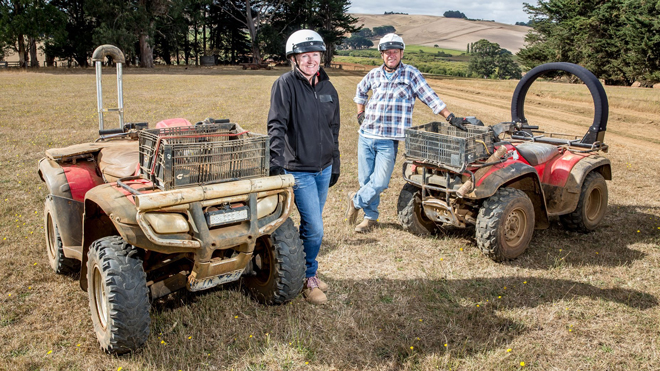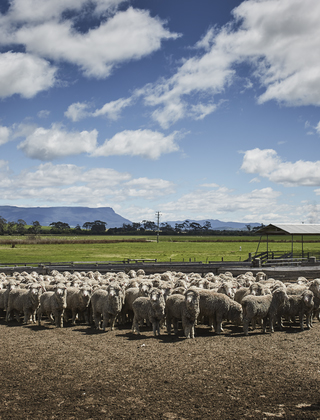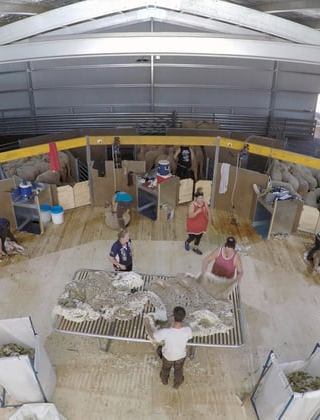Focus on farm safety to save lives & health

Since 2001, 1,742 people in Australia have lost their lives due to (non-intentional) farm-related incidents. Statistics demonstrate that it is not just the young and inexperienced that need to be vigilant, because more than half (51%) of the fatalities were people aged over 50.
The number of (non-intentional) farm-related deaths in Australia fell from 55 in 2022 to 32 last year, according to AgHealth Australia. However, older people are still more likely to account for the majority of fatalities.
Looking at the statistics for the 2023 calendar year, 20 of the 32 on-farm deaths (62.5%) were in the 45+ year category. In contrast, 3 were in the 30-44 year category, 6 were in the 15-29 year category, and 3 were under 15 years.
Males accounted for 29 of the 32 fatalities in 2023. There were 12 fatalities in NSW, 7 each in Queensland and Victoria, with the other states accounting for the remaining 6 deaths.
Farm vehicles (15) and mobile farm machinery (8) were involved in a large majority of the total fatalities in 2023. The most frequent causes were tractors (5) and quad bikes (5).
Other causes of death in 2023 included other farm vehicles (side by side, aircraft, ute, truck), farm machinery (fixed elevator/conveyor, earth moving equipment, harvesting machine, skid steer loader), and other reasons (fire/smoke/flame, heat, cattle yards, hay bale).
Other common reasons for farm fatalities that were thankfully absent from this year’s list include cars, trailers, animals, dams, sheds, powerlines, tow straps, chains and trees.
For further details, refer to the AgHealth Australia data published by AgriFutures in the 2023 Non-intentional Farm-Related Incidents in Australia report available on the AgriFutures website.

Quad bikes continue to be a major cause of injury and fatalities on Australian farms. However, appropriate safety precautions such as rollover protection and helmets, plus careful and responsible use, can reduce the risk. PHOTO: WorkSafe Victoria
There will have also been many ‘near misses’ and many non-fatal injuries, small and large, that could have had an impact on farm labour, productivity and profitability, as well as personal and family stress.
Causes of injury on the farm can also include anything from manual tasks and repetitive motion, through to incorrect and unsafe use of hazardous chemicals. Farming also often involves physically demanding tasks, frequently undertaken outdoors in all types of weather, and often working in isolated areas – these aspects of the work exacerbate the safety risks. Refer also to the SafeSheds article in this edition of Beyond the Bale about preventing injuries in the shearing shed.
Taking all this into account, it is therefore important to minimise the risk of injury and improve on-farm safety. There are many national and state organisations that have a role in helping farmers and everyone on the farm (workers, family and children, visitors) improve their safety, including their health and mental wellbeing.
One such organisation is the Rural Safety & Health Alliance (RSHA), which is a collaboration of rural Research and Development Corporations (RDCs) including AWI. The RSHA’s vision is for everyone on farm to see health and safety as a priority, and adopt safe practices – see www.rsha.com.au. One way that the RDCs work to achieve this is by showcasing farmer-facing health and safety resources that are available from national and state organisations.
Safety resources for farmers
AWI and the RSHA encourage property owners, managers, workers, contractors and family members to take a look at farm safety resources provided by organisations such as:
Farmsafe Australia: A national entity that promotes awareness and adoption of health and safety practices on farms. www.farmsafe.org.au
AgHealth Australia: Within the University of Sydney’s School of Rural Health at Dubbo (NSW), it conducts research on injury and fatality in agriculture and has a range of resources for farmers. http://aghealth.sydney.edu.au
National Centre for Farmer Health: A partnership at Hamilton (Vic) between Deakin University and Western District Health Service, it conducts research into risks and injury prevention for farmers, and has a range of resources. www.farmerhealth.org.au
State organisations – each provides farm safety resources:
- SafeWork NSW
www.safework.nsw.gov.au/your-industry/agriculture,-forestry-and-fishing
- AgVic: Smarter, Safer Farms
www.agriculture.vic.gov.au/about/agriculture-in-victoria/smarter-safer-farms
- Worksafe Victoria
www.worksafe.vic.gov.au/agriculture
- SafeWork SA
www.safework.sa.gov.au/industry/agriculture
- Safe Farms WA
- Workplace Health and Safety Queensland
www.worksafe.qld.gov.au/your-industry/agriculture,-forestry-and-fishing
- Safe Farming Tasmania
www.worksafe.tas.gov.au/topics/services-and-events/safe-farming-tasmania
This article appeared in the March 2024 edition of AWI’s Beyond the Bale magazine. Reproduction of the article is encouraged.















